Have you got cardboard boxes around the house? You would be amazed at what you can do with this material, which is as cheap and readily available as it is sustainable and biodegradable. The sturdy nature of the cardboard makes it suitable for constructing a range of different objects, from children’s toys to furniture pieces.
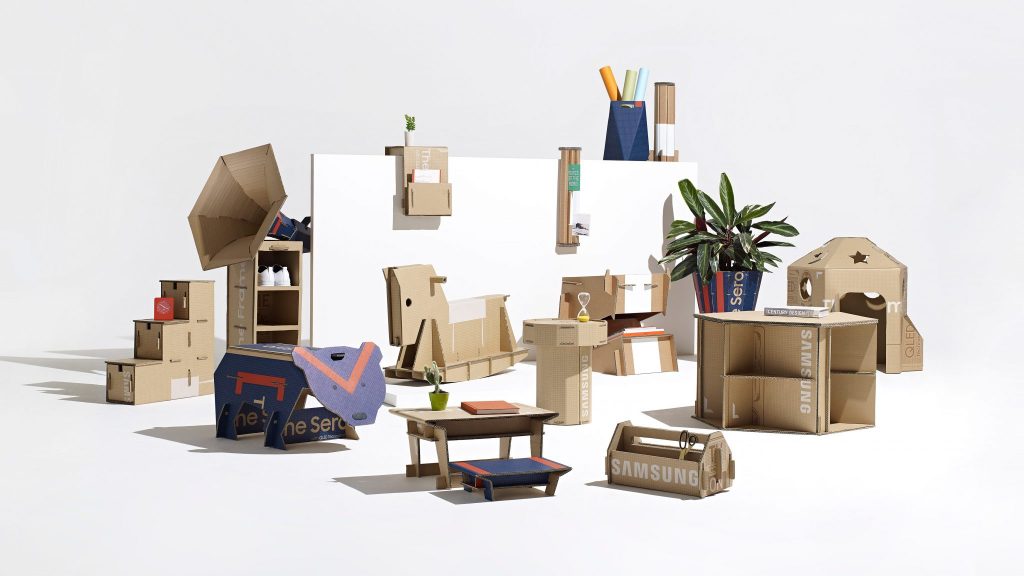
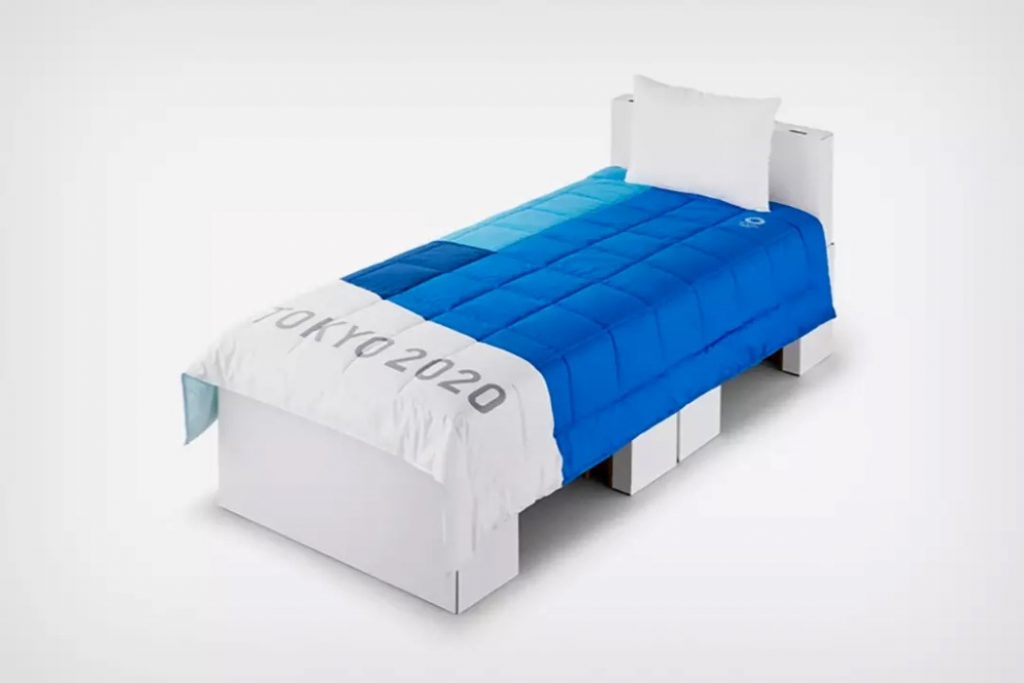
Cardboard beds for Tokyo Olympics by Airweave (via Yanko Design)
From the very beginning, organizers of the Tokyo Olympics 2020 (postponed until 2021 because of the coronavirus crisis) have advocated making the games eco-friendly by reusing as many resources as possible. The officials have set a target of recycling or reusing as much as 99% of all items and good procured. The list of their sustainable solutions features medals from rare-earth materials sources from e-waste and torches of metals reclaimed from the temporary shelter housing for the victims of Great East Japan earthquake and tsunami in 2011.
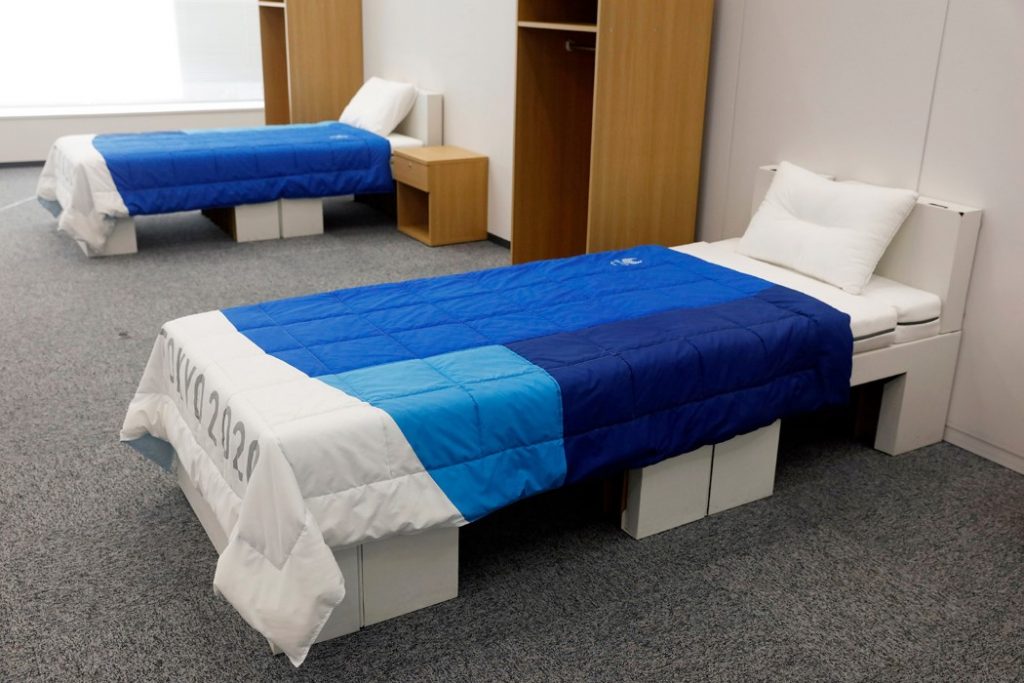
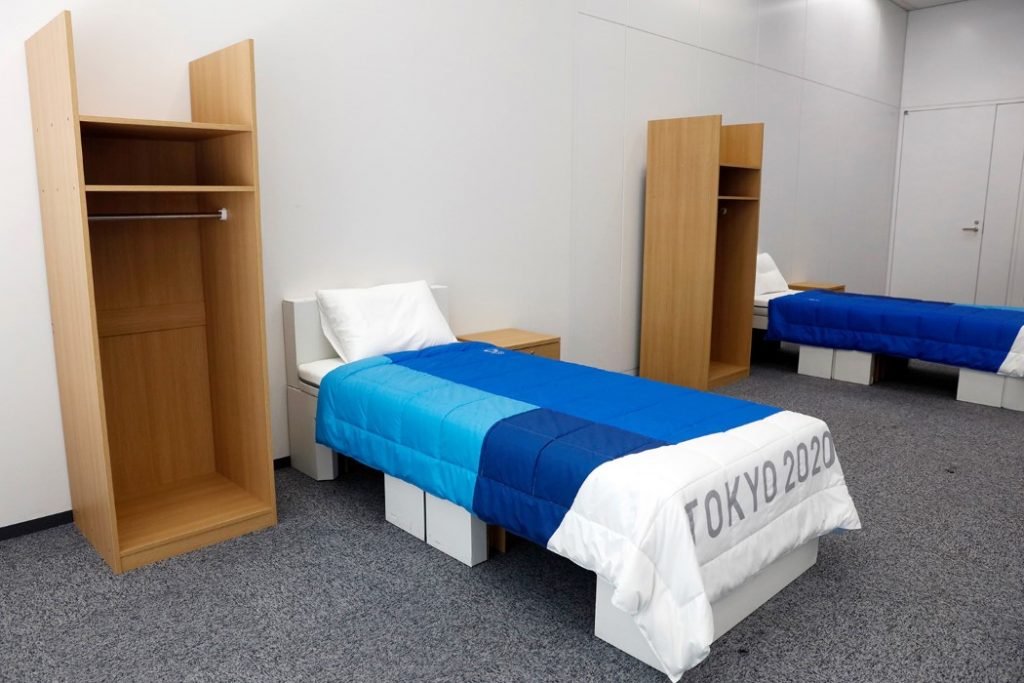
Cardboard beds for Tokyo Olympics by Airweave (via Yanko Design)
Cardboard is another environmentally friendly renewable material to be used in the preparations. The organizers are utilize it to manufacture all villages’ beds for the 18,000 athletes coming to the global event. The high-resistance material is proved to be stronger than wood and take as much as 200 kg. The mattresses and pillows, just like the beds themselves, will be provided by Japanese company and the Olympics partner Airweave. To minimize resource wastage, they include a polyethylene construction that can be easily recycled after the games are over. This means, for the first time ever in the history of the Olympics beds and bedding would be made almost entirely from renewable materials.
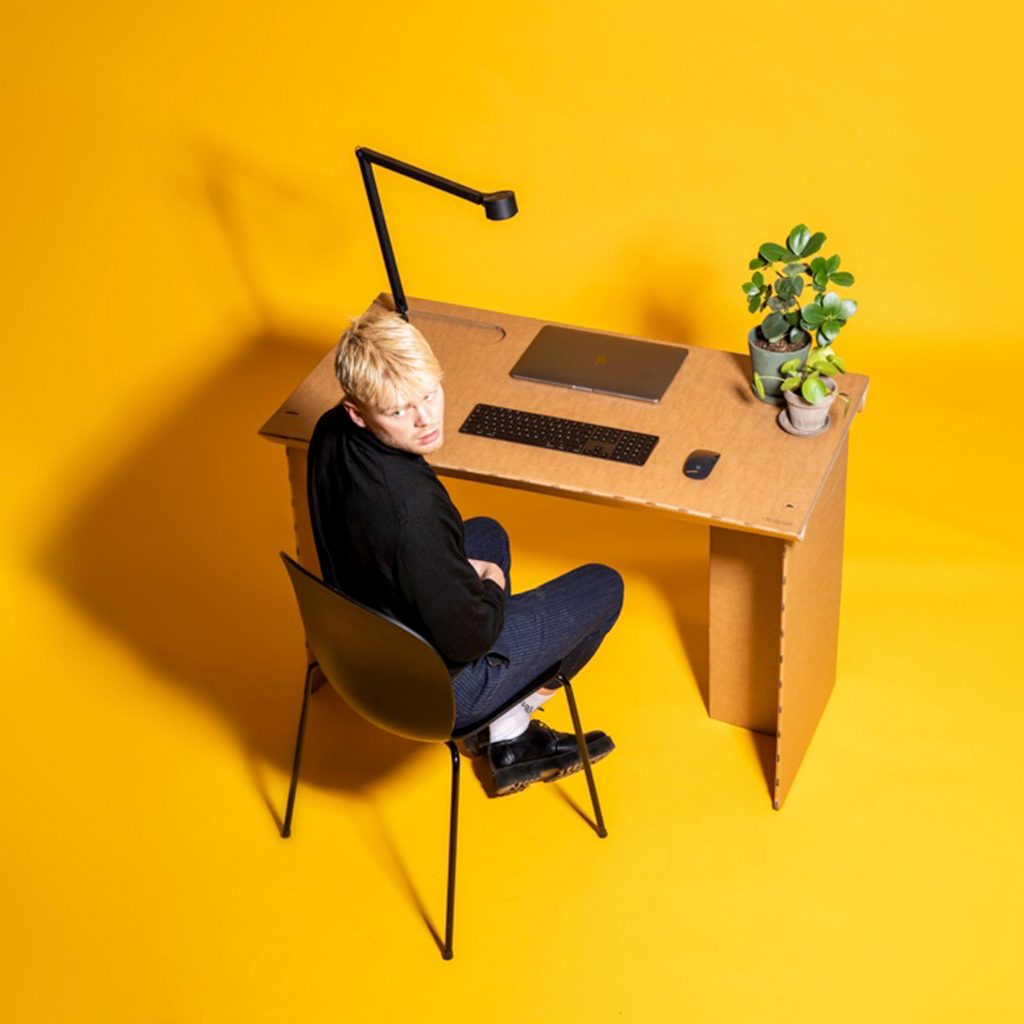
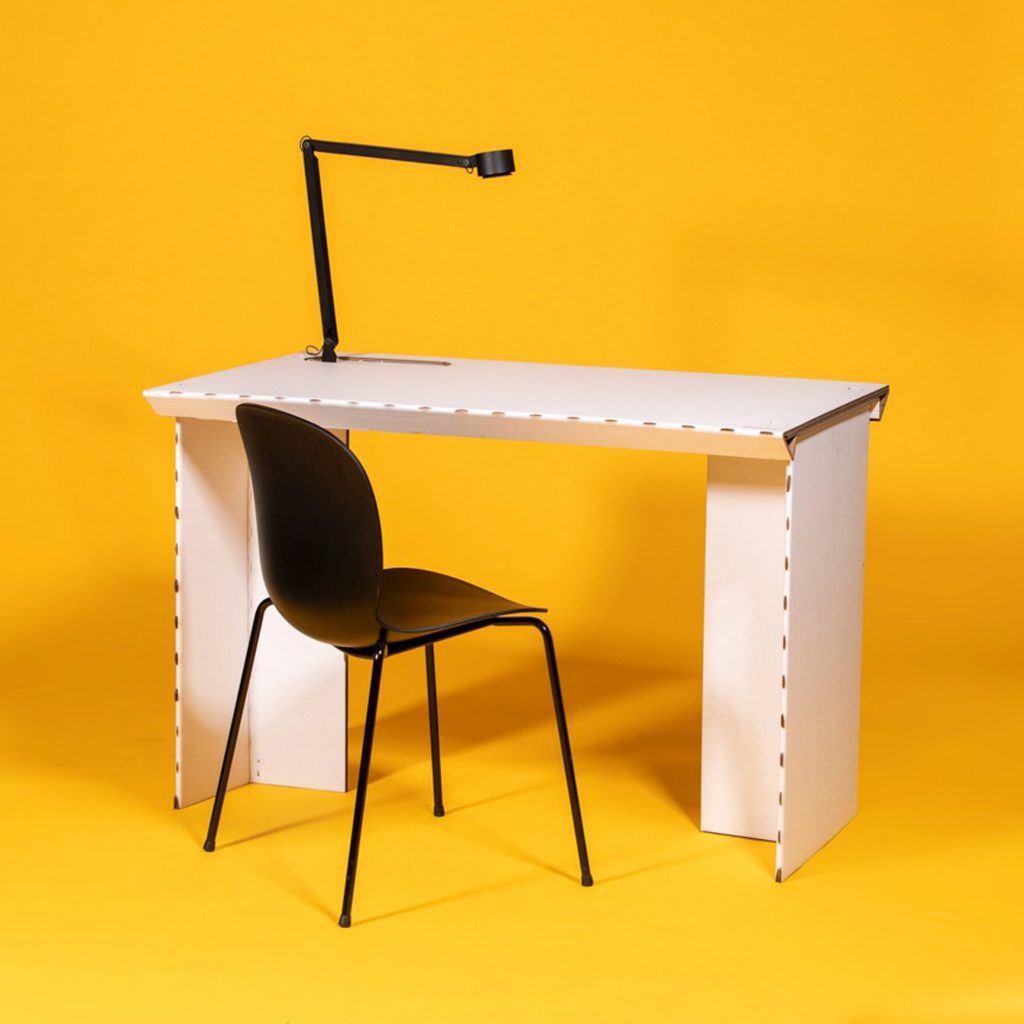
Cardboard desk by Stykka
Danish design start-up Stykka developed a simple DIY cardboard desk after Denmark announced a national lock-down because of the novel coronavirus outbreak. As the designers discovered that most of the team didn’t have a proper desk space to work from home, they imagined many others could be suffering from the same problem.
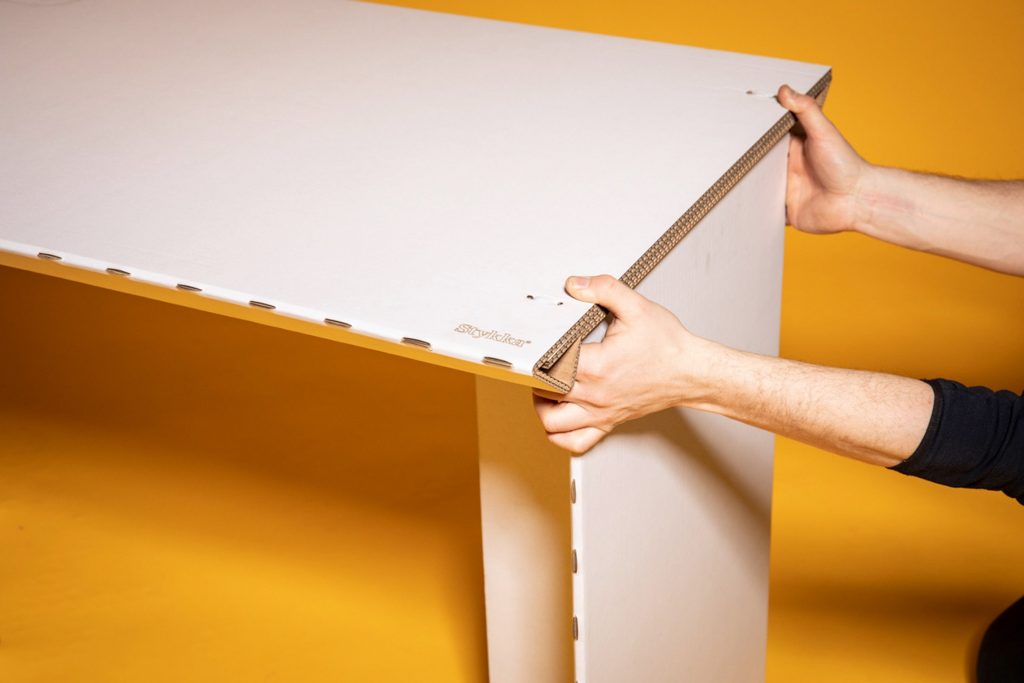
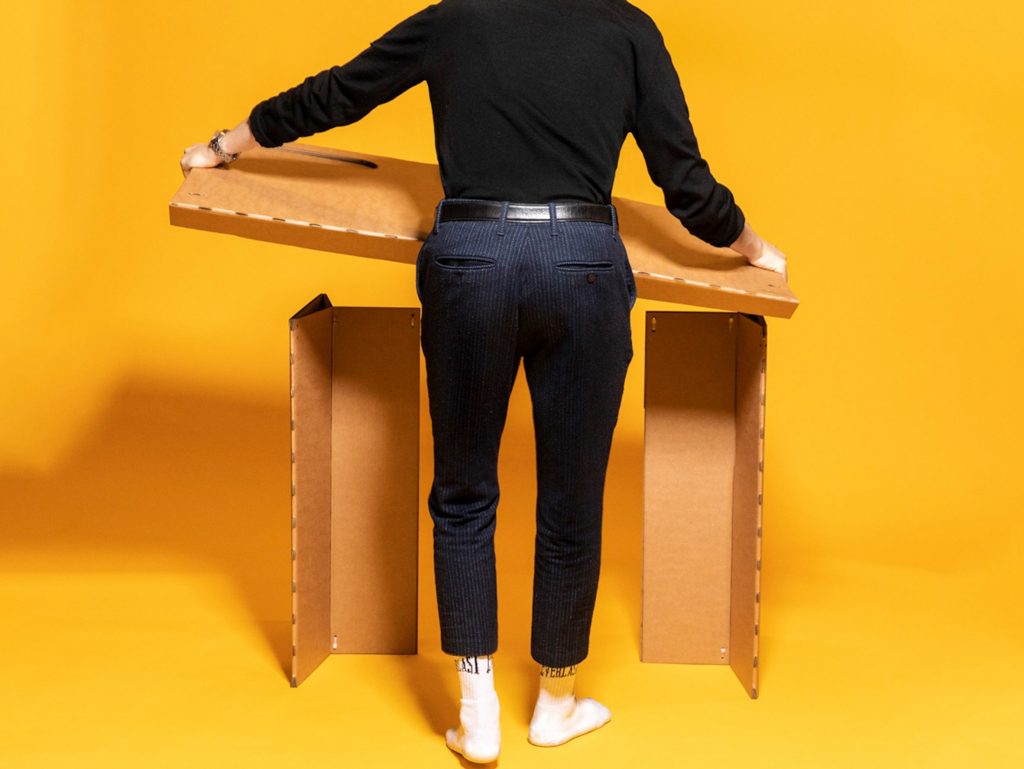
Cardboard desk by Stykka
Called the #StayTheFuckHome Desk, in reference to a social media hashtag that has been used to promote self-isolation, Stykka’s solution is a temporary flatpack workstation that can be easily assembled out of three pieces of cardboard held together using cable ties. The temporary desk eliminated the need to share a desk with other members of the family or occupy a dinner table.
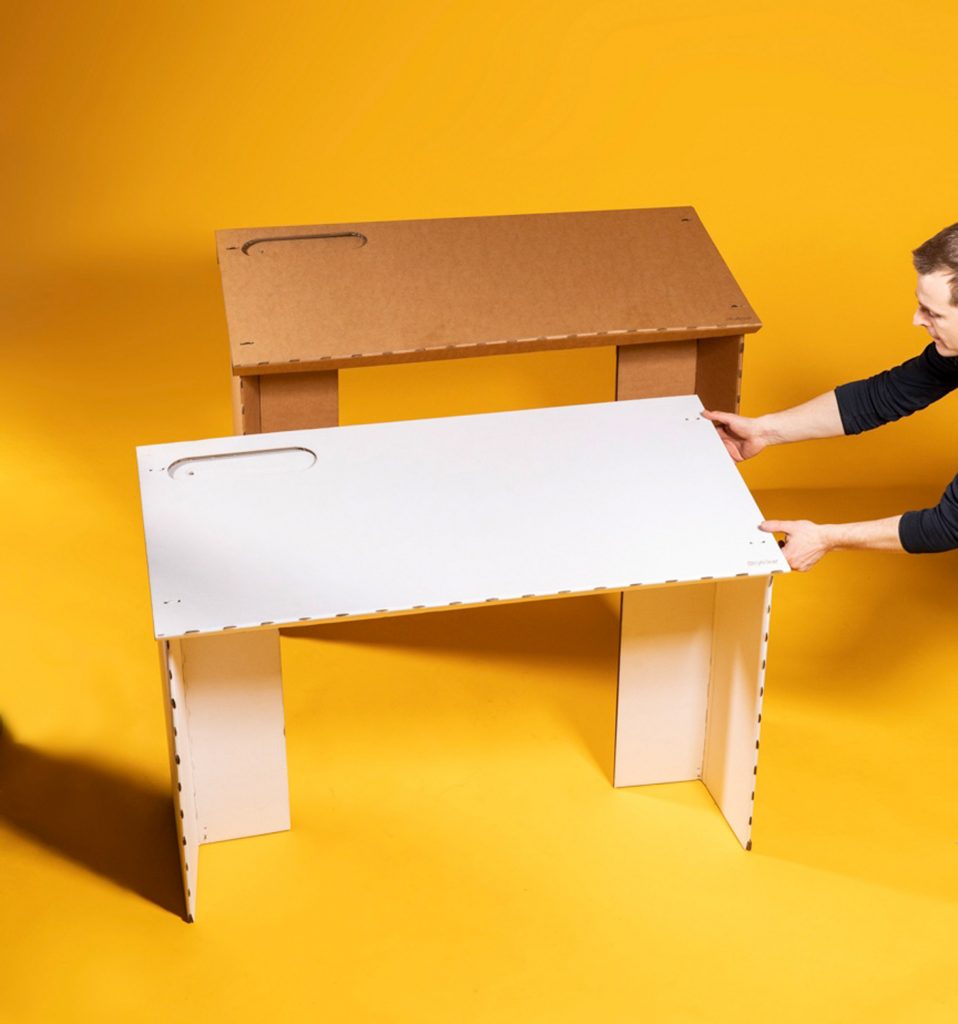

Cardboard desk by Stykka
Those who have access to cardboard and a laser cutter can download the template and print it out, as the design is open source. The designers also encourage people will be inspired to hack the design and customise it to their own needs. The production files were available to download from the Stykka websit Those who purchase the desk from Stykka are informed that the cardboard used for it is sourced from a Danish facility that uses over 80 per cent recycled fibres.
Because the design is made from cardboard, it should be completely recyclable once the pandemic is over.
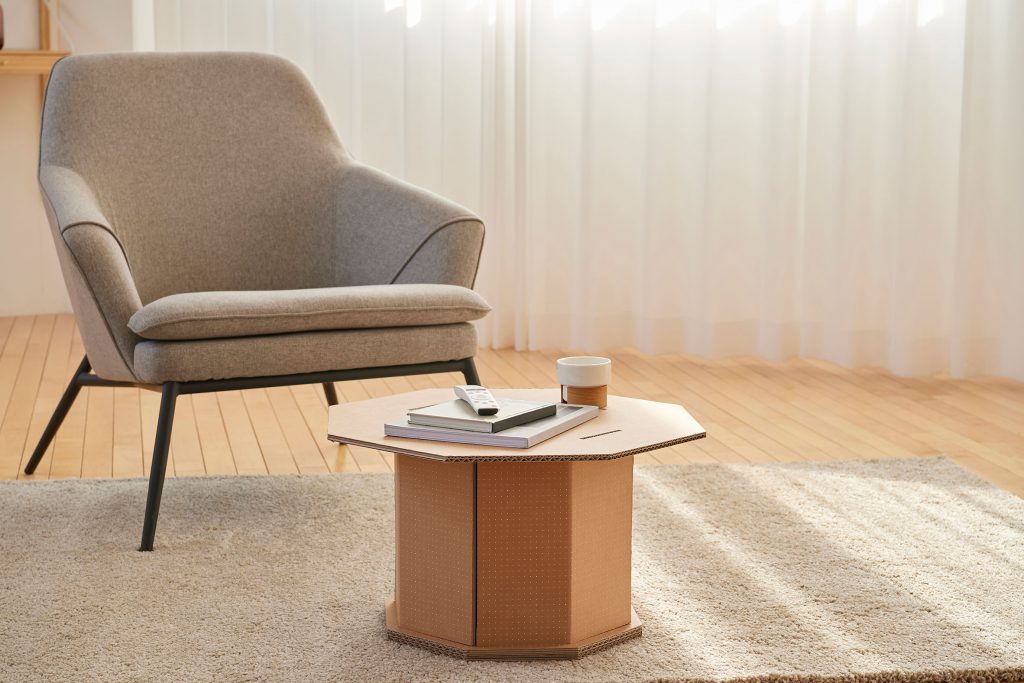
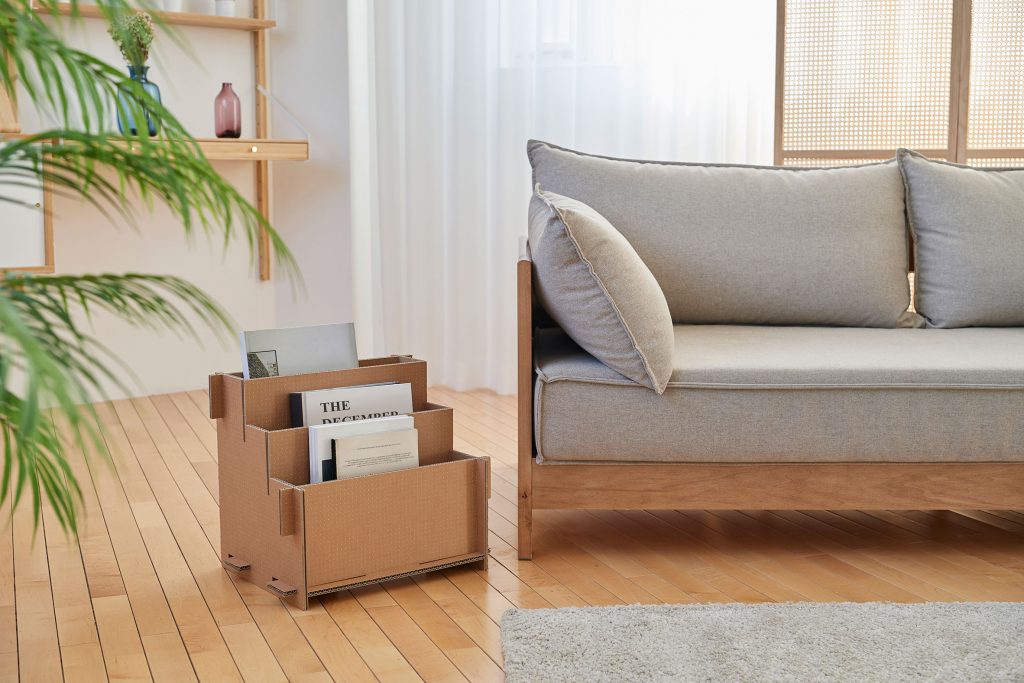
Eco-Packaging by Samsung (ph: Benjamin Swanson; via dezeen)
Thick, corrugated cardboard is a material widely used by electronics manufacturer for shipping boxes to properly protect the goods inside. Concerned by the fact that this packaging often ends up as waste, the Korean electronics major Samsung aims to makes its business more sustainable through its Eco-Packaging concept, which provides customers of their television sets with a way to repurpose their cardboard packaging. Each Eco-Packaging box comes with a special dot matrix pattern that can be used as a guide to create new household items by cutting and reassembling the box. A QR code on the box provides instructions for the available designs that include a storage box, a magazine rack, a TV console and a cat house.
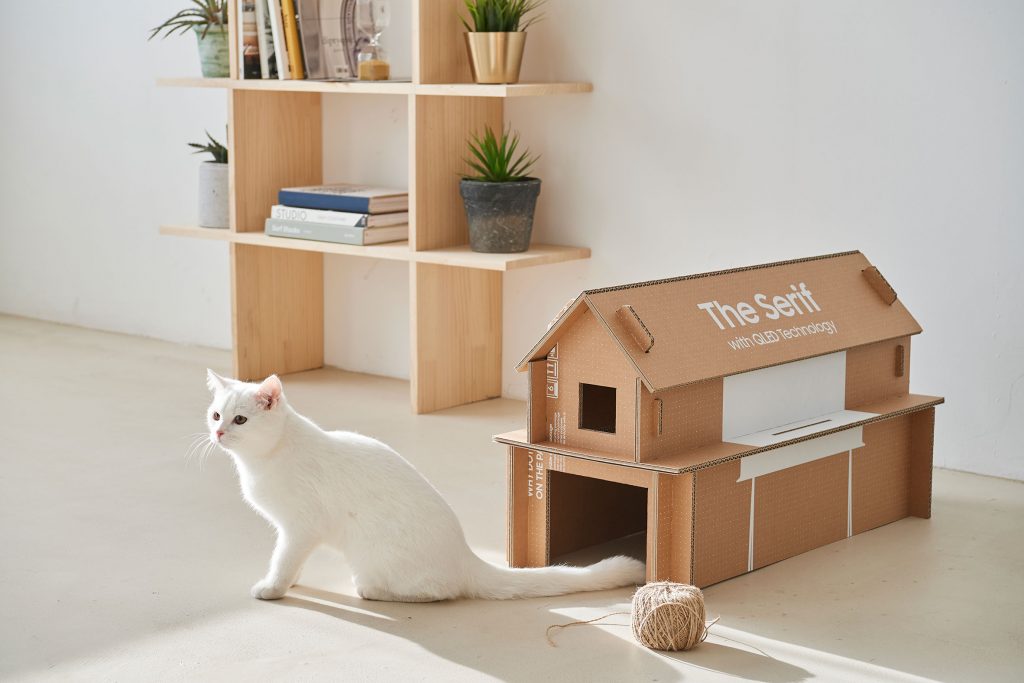
Eco-Packaging by Samsung (ph: Benjamin Swanson; via dezeen)
Together with Dezeen, Samsung has launched an international design competition that challenges contestants to design any kind of object for the home that can be made by reusing cardboard television boxes. The winner will be announced in September 2020, yet the shortlisted works really strike the imagination.
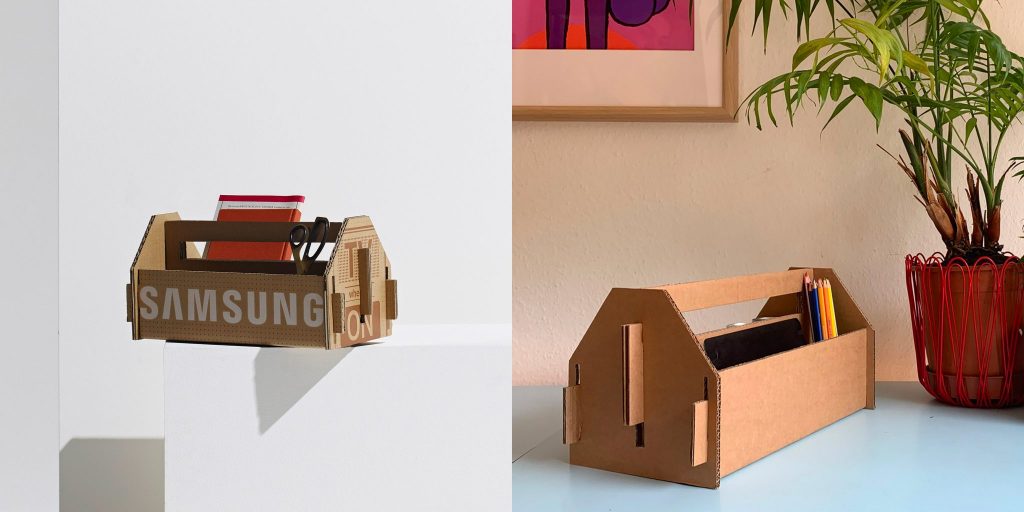
Toolbox by Joseph I’Anson (ph: Benjamin Swanson; via dezeen)
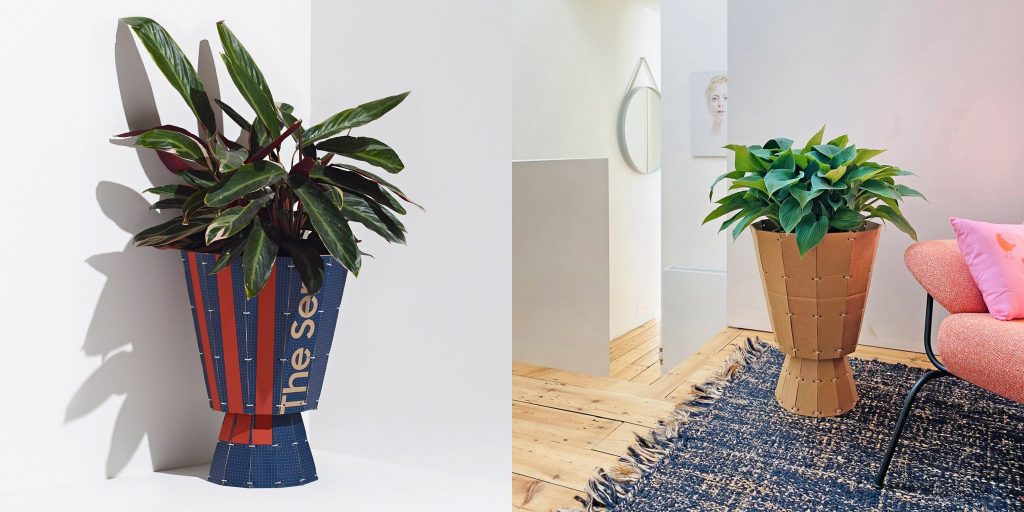
Gio container by Francesco Pierazzi Architects (ph: Benjamin Swanson; via dezeen)
The designs include, among others, a simple toolbox, which could be used to store tools, stationery, plants or food, by the British designer Joseph I’Anson and a faceted multifunctional container that can be used as a plant pot, a small side table or a storage container, by London-based Francesco Pierazzi Architects.
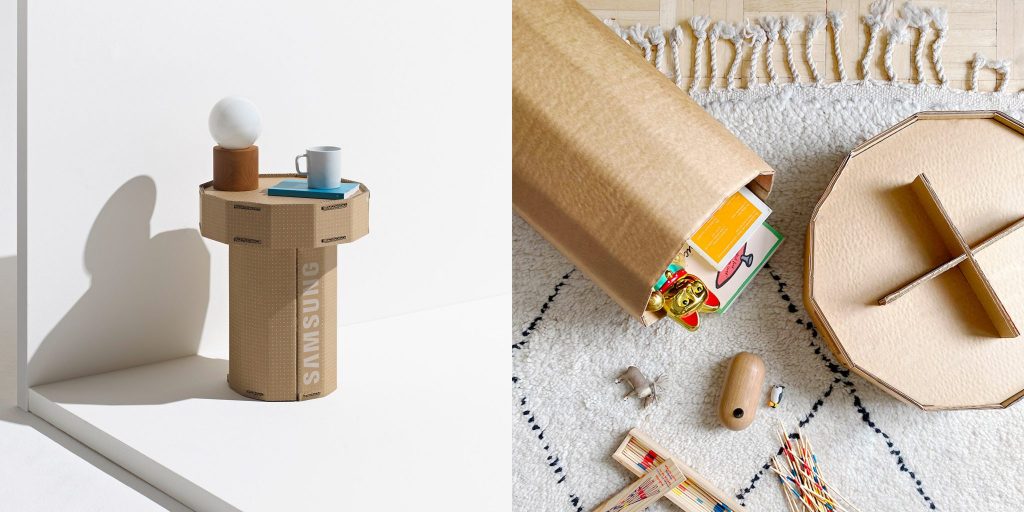
Kinoko Table by Georgia Kasmin and Frank Lin (ph: Benjamin Swanson; via dezeen)
Georgia Kasmin and Frank Lin from London have developed a cylindrical side table which additionally provides a storage space in its base. The design is called Kinoko Table (‘mushroom’ in Japanese) because of its shape.
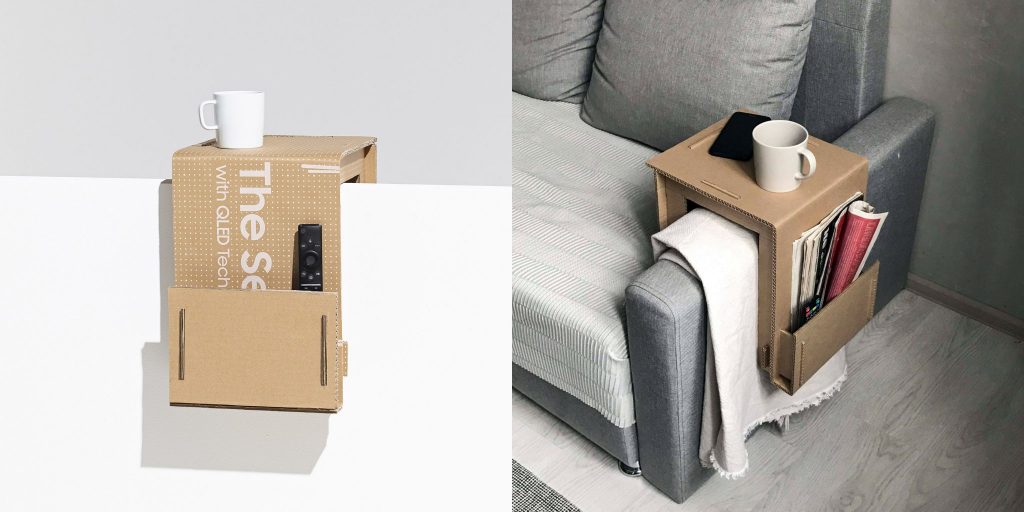
Alex sofa table by Nina Nechaeva and Aleksey Stelmakh (ph: Benjamin Swanson; via dezeen)
The small side table designed by Nina Nechaeva and Aleksey Stelmakh from Moscow can be hooked over the armrest of a sofa, providing a convenient surface to place mugs or cups, as well as a storage area for magazines or remote controls.
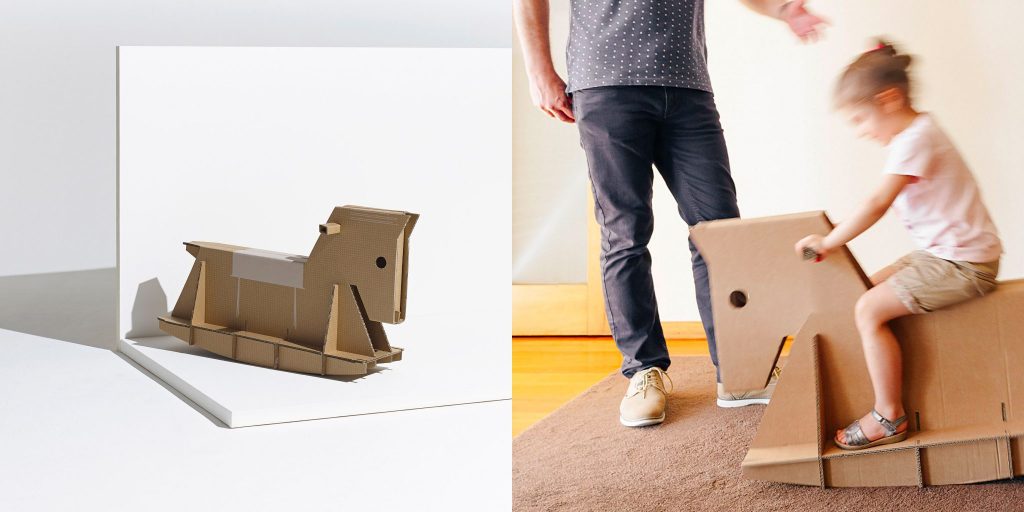
The Rider rocking horse by André Cardoso (ph: Benjamin Swanson; via dezeen)
André Cardoso from Portugal has created a rocking horse for kids that can be assembled from a series of folded cardboard panels, which are orientated so that the central graphic element on the packaging, a TV icon, forms a saddle.
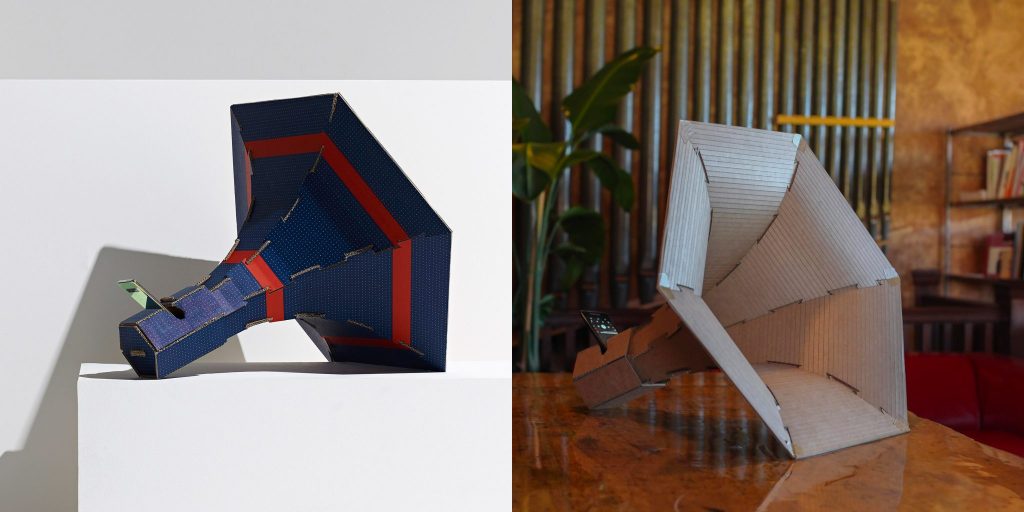
Amplephone amplifier by Pushan Panda (ph: Benjamin Swanson; via dezeen)
Cardboard boxes can even be repurposed into an amplifier, as proposed by San Francisco based designer Pushan Panda. His proposal comprises a cardboard horn that amplifies music from a mobile phone, while its shape references the original design of the amplifiers found on gramophones.
Header image by Benjamin Swanson